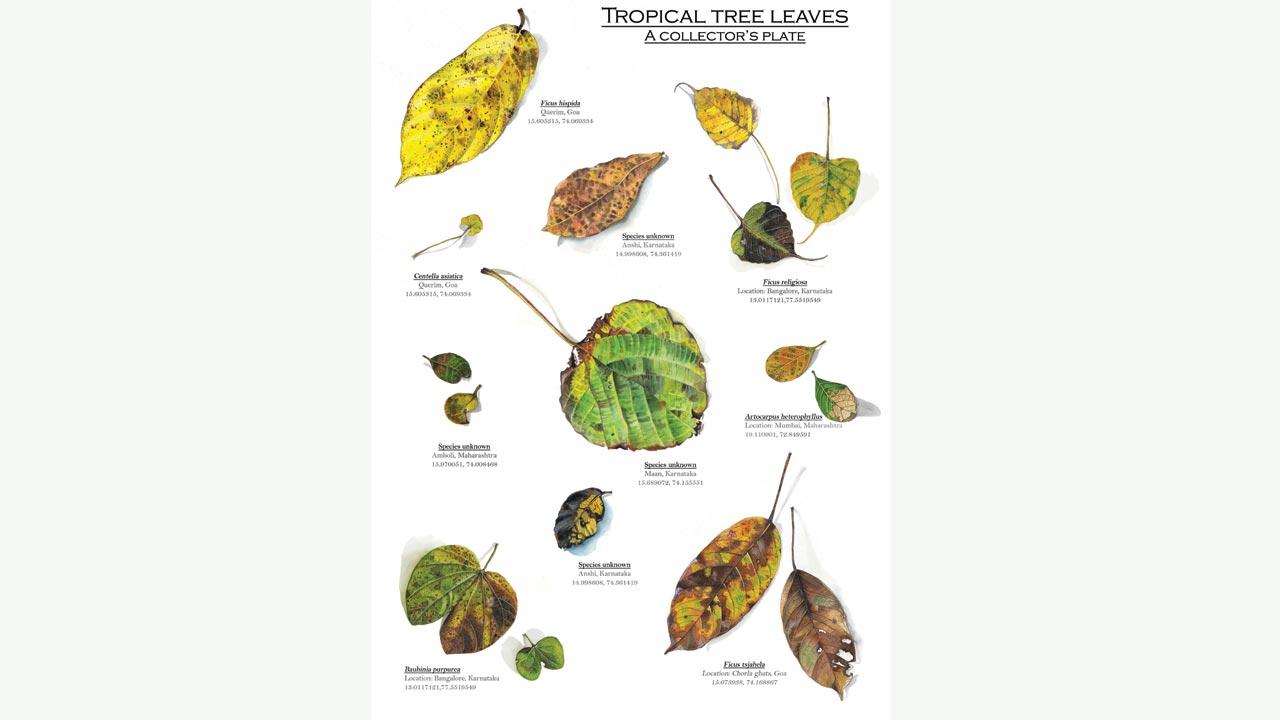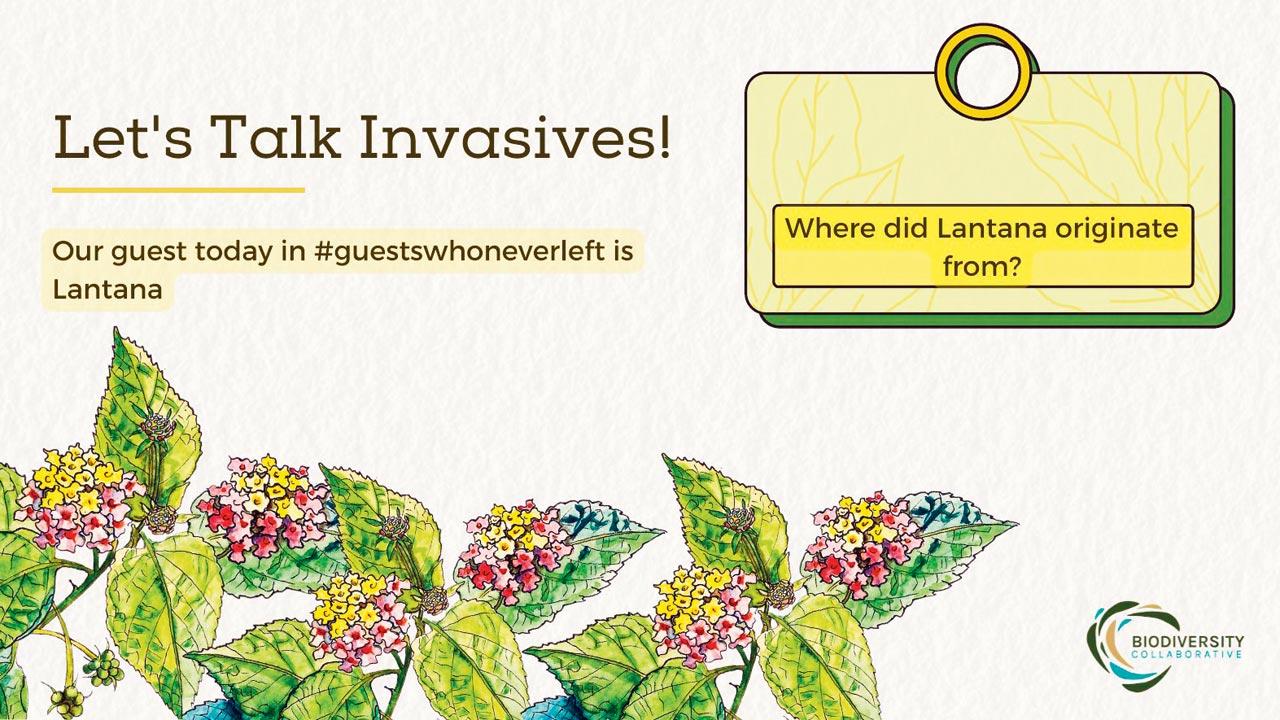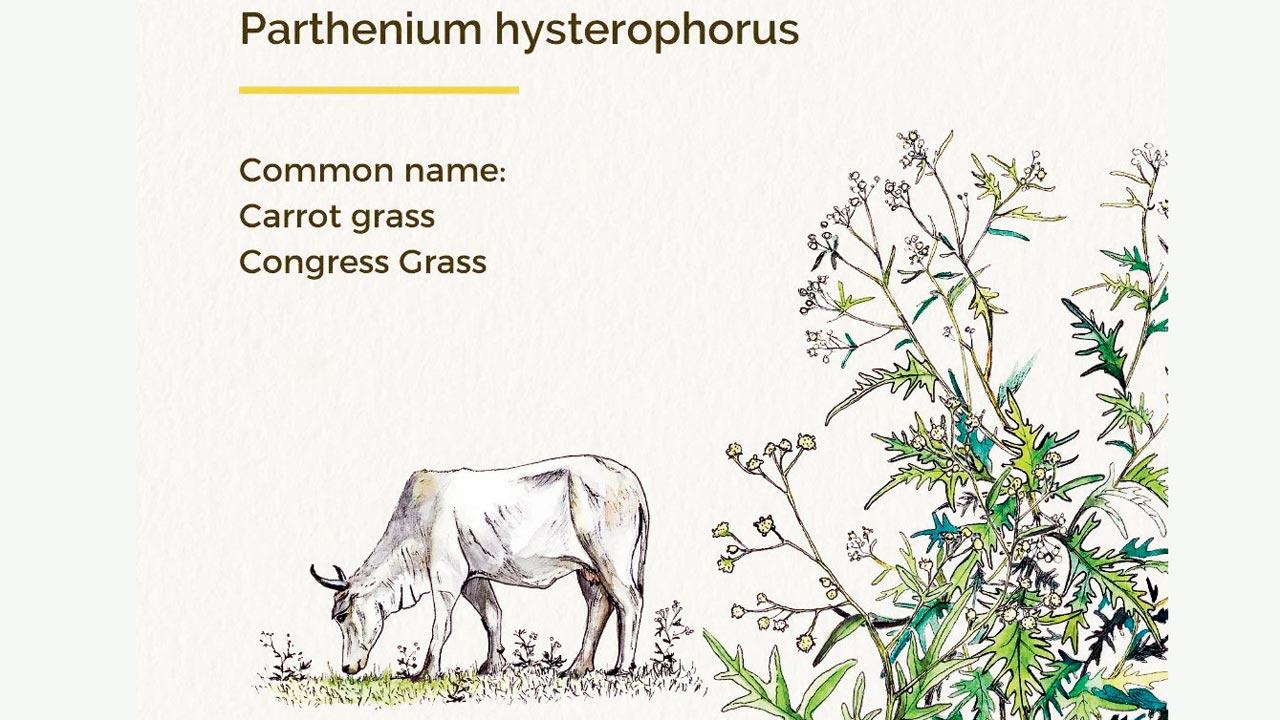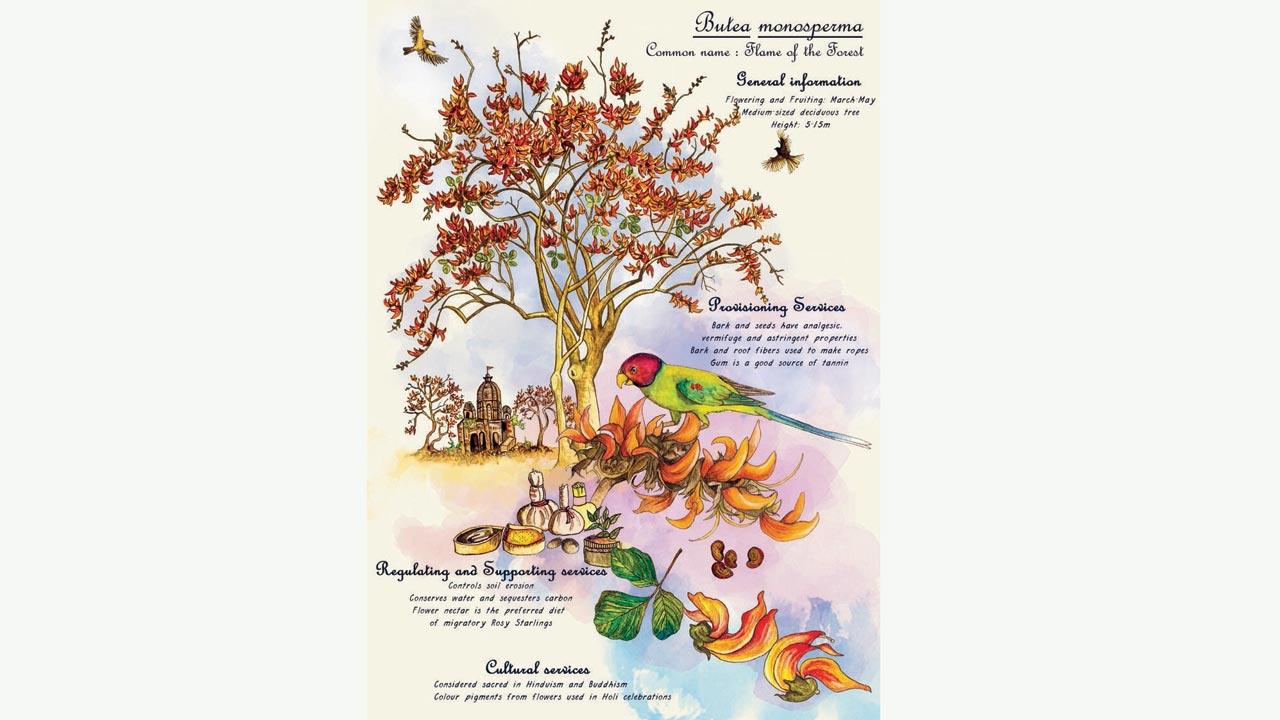A Vile Parle scientist is using his illustration skills to discuss the intriguing habit of some invasive plants that came to India, never left, and made life for native trees difficult

Pic/Getty Images
Not all guests are welcome, especially those who overstay their welcome. Perhaps the same can be said about plants.
ADVERTISEMENT
A recent illustration series by scientist and natural history artist, Ravi Jambhekar, commissioned by Biodiversity Collaborative, a Bengaluru-based network that promotes biodiversity research and conservation, puts the spotlight on some of invasive plants that have made India their home. Among them is the now popular Lantana Camara, aptly called ghaneri in Marathi. A dense plant which grows to six feet and spreads up to eight feet, it has beautiful pink and yellow tiny floors, that is often seen in balconies, lining highways and even at tourist destinations like Matheran and Panchgani.
 A collage of leaves from the Western Ghats. Jambhekar began his journey as an illustrator by painting leaves in his free hours during his PhD field work
A collage of leaves from the Western Ghats. Jambhekar began his journey as an illustrator by painting leaves in his free hours during his PhD field work
“Coming to India from Central and South America for ornamental purposes, the Lantana has managed to escape and find its way everywhere, whether farmlands or forests,” says Jambhekar, adding, “Plants compete for light and water and because this species grows densely, it doesn’t allow light to reach other smaller plants that grow beneath. It also releases a chemical which is allelopathic in nature, and thus suppresses the growth of surrounding species, affecting insects that feed on them.”
Jambhekar, a resident of Vile Parle, has long been interested in flora and fauna. But, it was during his PhD research that he ended up spending time in the Western Ghats of Maharashtra and Goa, studying butterflies and their behaviour. It’s here that he took to illustrating. “Once it would get dark, there wasn’t much work to do, and there was barely any mobile network, so, I thought why not use the time to make illustrations. Every day, I would bring a leaf from the field and sketch it,” says Jambhekar, 33, an alumna of Indian Institute of Science, Bengaluru. As he started to share his sketches on social media, he began to get noticed by scientists and researchers, who started reaching out to him for work. “These were mainly science-backed illustrations for social science outreach projects in the space of environment and ecology.”
 Jhambekar’s sketch discusses the Lantana Camara, a dense plant that’s found in gardens, along highways and across India’s hill stations. It came to India from Central and South America. Pics courtesy/Biodiversity Collaborative
Jhambekar’s sketch discusses the Lantana Camara, a dense plant that’s found in gardens, along highways and across India’s hill stations. It came to India from Central and South America. Pics courtesy/Biodiversity Collaborative
Among these projects is the ongoing series, which features 26 invasive plants, including Prosopis Juliflora known popularly as junglee kikar or vilayati babul, Parthenium Hysterophorus (Congress grass) and Pontederia Crassipes (water hyacinth)which sports beautiful purple flowers. “An aquatic plant native to South America, Pontederia is seen everywhere, around rivers, lakes and ponds and is not limited to any one region of India. The problem with this plant is that it makes fishing difficult, entangling the net. Besides, it also blocks water canals and is a breeding ground for mosquitoes,” Jhambekar explains about the freshwater weed. The Parthenium, which is believed to have arrived in India alongside wheat from America during the 1950s, can affect crop germination. “While contact with the plant can cause allergies, its pollen causes respiratory diseases. Moreover, it takes over grasslands, leading to the loss of the fodder for cattle.”
 Parthenium Hysterophorus, popularly known as Congress grass, takes over grasslands, leading to loss of fodder for cattle
Parthenium Hysterophorus, popularly known as Congress grass, takes over grasslands, leading to loss of fodder for cattle
Jhambekar’s last project was for Delhi-based non-profit ICLEI South Asia, which works towards sustainable urban development. For them, he illustrated 10 common native Indian trees and their cultural and ecological significance. “The leaves of the golden shower tree are used in Kerala during the festival of Vishu; the cluster fig tree has anti-diabetic and anti-inflammatory properties, the jackfruit is an important nesting tree for heronry birds, among others,” he shares. Jambhekar has also created illustrations for wildlife scientist Panchapakesan Jeganathan’s Birds That Sing Their Name, an e-book for children that looks at how ornithologists name birds.
 Flame of the forest or the Palash tree is found commonly in dry deciduous forests in India. Parakeets, mynas, drongos and bulbuls are known to feed on the nectar of the radiant flowers. The bark and seeds are considered sacred to Hinduism and Buddhism, and used in traditional medicine. Pic Courtesy/ICLEI
Flame of the forest or the Palash tree is found commonly in dry deciduous forests in India. Parakeets, mynas, drongos and bulbuls are known to feed on the nectar of the radiant flowers. The bark and seeds are considered sacred to Hinduism and Buddhism, and used in traditional medicine. Pic Courtesy/ICLEI
“I always wanted to use art and science together to help create awareness. The research work that we do includes a lot of statistics, graphs and analyses which people at large, even government bodies, find difficult to comprehend. But, the awareness about the biodiversity that thrives in our own backyard is easier with pictures, documentaries and illustrations,” observes Jambhekar. What started as outreach at a personal level, the sketching has now become a parallel profession.

However, finding a job that allows him to do both is still a challenge. “I like both—researching in the field, doing statistical analysis and creating illustrations—but they both demand time and attention. I worked on these projects, including the one on native trees, during the pandemic when I took a gap year. My goal is to straddle both but outreach art in India is in a nascent stage; we have only a few botanical artists. Currently, I make illustrations over the weekend,” concludes Jambhekar, who took a full-time position at the Indian Institute for Human Settlements earlier this year where he is studying how urbanisation is affecting the bird population of Bengaluru. Perhaps its findings will be fodder for another lot of eye catching art.
 Subscribe today by clicking the link and stay updated with the latest news!" Click here!
Subscribe today by clicking the link and stay updated with the latest news!" Click here!







